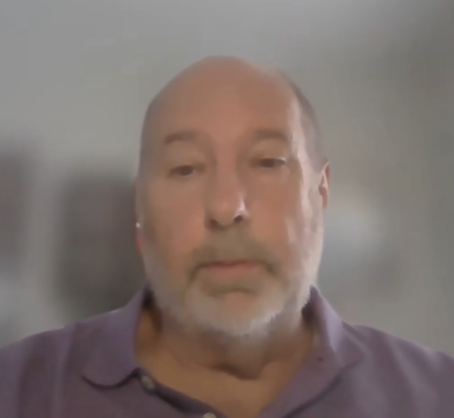The Oncology Connection
Oncology associations are advising practices to carefully weigh the risks and benefits of participating in a new alternative payment model by the Centers for Medicare and Medicaid Services (CMS) that is designed to improve the quality of cancer care for Medicare beneficiaries while reducing the total cost of care. The 5-year voluntary Enhancing Oncology Model (EOM) is the successor to the Oncology Care Model (OCM) and was announced one month after the OCM concluded on June 30.
Concerns about the EOM include decreased financial support for increased care requirements as well as 2-sided risk for practices throughout the model.

“We absolutely, positively 100% want and would welcome reform. However, it needs to be scalable and meaningful for all cancer care teams and other stakeholders. We are thankful for CMMI’s effort, but we welcome some revisions that help in those goals,” said Bo Gamble, director of quality and value for the Community Oncology Alliance (COA).
In a letter sent to CMS in mid-September, the COA leadership stated, “without changes, the EOM could fail to recruit a meaningful number of oncology practices—especially independent community oncology practices—causing it to fail as a demonstration project and as a model that can realistically transform the U.S. cancer care and payment system for the better.”
The COA cited a survey it conducted of 155 practices in late July that found less than half the practices (42.6%) that participated in the OCM planned to participate in the EOM. Of all practices surveyed, including OCM and non-OCM participants, only about a third (32.2%) said they planned to participate in the EOM.
The OCM was dominated by community oncology practice physicians. By the end of the OCM, two-thirds of the 126 oncology practices that participated in the OCM were community oncology practices and one-third were hospital-based. The model included 5 payers and accounted for about 25% of the chemotherapy-related care for Medicare fee-for-service beneficiaries in the United States.
Reduced Payments for Care Transformation
In the EOM, participants will be paid a $70 per-beneficiary-per-month Monthly Enhanced Oncology Services (MEOS) payment to support care transformation, much less than the $160 per-beneficiary-per-month payment OCM participants received. EOM participants can bill an additional $30 per-beneficiary-per-month for EOM beneficiaries that are dually eligible. This additional payment will be excluded from EOM participants’ total cost of care responsibility.
EOM participants may receive a performance-based payment, but they may also owe CMS a performance-based recoupment based on the total cost of care and quality measures during 6-month episodes that begin with the receipt of chemotherapy. The OCM featured shared savings and performance-based incentives for the first several years before providing an option for practices to take on downside risk.
Some OCM Participants May Be Left Behind

Brian Bourbeau, division director for practice health initiatives for the American Society of Clinical Oncology (ASCO), believes the EOM is going to appeal to larger organizations with the capability of collecting and reporting on data and financial planning for the EOM risk models. “My expectation is that some smaller practices that participated in OCM and many of whom remained one-sided through the model will not participate in EOM,” he said.
In addition, there is disincentive for practices that participated and did well in OCM, Bourbeau pointed out. “EOM is basing their starting point financially on the time period of OCM, and there is a practice experience adjustment in the EOM whereby practices will have to compete with their own past performance. So if they already cut costs in OCM, they now have to find new ways to cut costs under EOM,” he said. “Practices that were not a part of OCM and perhaps didn’t cut costs in that time period will perhaps look at EOM as attractive because they do not have that practice experience adjustment counting against them.”
EOM Limited to 7 Cancer Types
Another concern is that the EOM is limited to 7 cancer types: breast cancer, chronic leukemia, small intestine/colorectal cancer, lung cancer, lymphoma, multiple myeloma, and prostate cancer. “Limiting the model to only 7 cancer types can create separate care systems and processes between patients with different cancers,” COA wrote to CMS. “To limit the EOM to only 7 cancers creates an inequity in care for patients with other cancers. Yet, the EOM emphasizes health equity.”
Bourbeau explained that EOM chose cancers with intensive care coordination needs. “The 7 that they identified are all appropriate for the model. Unfortunately, they left out gynecologic cancers—patients who also need that intense level of care coordination. We’re concerned about many of our female patients with uterine or ovarian cancers missing out on services and receiving less care under EOM than patients with other types of cancers.”
He pointed out that limiting the EOM to 7 cancers eliminates almost half of the episodes that were in the OCM, which essentially reduces the MEOS payments to a quarter of what OCM practices received. “So now they have to figure out how to afford doing data collection and reporting and meeting all aspects of the model with far less funding upfront,” Bourbeau said. “The practices have to figure out whether they are going to continue to deliver these enhanced services to patients that do not fall on the EOM’s list of included diagnoses.”
Bourbeau said ASCO is trying to educate oncologists on how to fund higher levels of care coordination with service codes that are reimbursed by Medicare, such as codes for chronic care management.
Practices Considering EOM Seek to Model Risk
Matt Devino, MPH, director of cancer care for the Association of Community Cancer Centers (ACCC), said his organization is seeking to support member programs and practices who are determining if it will make sense for them to participate, but they have concerns.
“I don’t think many groups in the current reimbursement landscape—decreasing reimbursement year over year via the physician fee schedule and sequestration—have an appetite for an unknown level of risk,” Devino said. “To capture a broader spectrum of oncology practices across the country, particularly those that provide care for underserved communities, it would have made more sense to offer an upside-only option in this new ACO-type total-cost-of-care model before requiring them to take that downside risk.”

Devino said ACCC members that had participated in OCM and are considering EOM want to see their historical performance data superimposed with the EOM risk methodology and new price prediction and benchmarking data. However, they have not yet received their data for OCM performance periods 9, 10, 11, or 12.
Applications for the EOM are due Sept. 30, giving practices, if selected by CMS for the EOM, approximately 6 months to decide whether to commit in March 2023.
“They won’t have time to do that intense type of financial modeling before the Sept. 30 deadline, but it’s not a binding application. I think what they will do is they will get all their materials in by the deadline, if they haven’t already, and then spend the fall and winter months delving into the data, trying to request as much as they can from CMMI, to ultimately make a participation decision by February or March,” he said.
For more information
CMS.gov. Enhancing Oncology Model. (2022, September 15). https://innovation.cms.gov/innovation-models/enhancing-oncology-model
Community Oncology Alliance. (2022, September 14). Community Oncology Alliance’s letter to CMS on EOM. https://communityoncology.org/reports-and-publications/comment-letters/coa-formal-comments-to-cms-on-enhancing-oncology-model-concerns/
Bourbeau, B., Devino, M., Gamble, B., & Grady, L. (2022, August 25). Assessing & understanding the EOM: Oncology associations webinar on the new CMMI model. [Webinar] Community Oncology Alliance. https://communityoncology.org/featured/assessing-understanding-the-eom-webinar/
ASCO. Enhancing Oncology Care model. ASCO fact sheet. https://practice.asco.org/sites/default/files/drupalfiles/2022-08/ASCO-EOM-Fact-Sheet.pdf
Devino, M., (2022, July 20). How does the EOM compare to the OCM? ACCCBuzz Blog. https://www.accc-cancer.org/acccbuzz/blog-post-template/accc-buzz/2022/07/20/how-does-the-eom-compare-to-the-ocm







